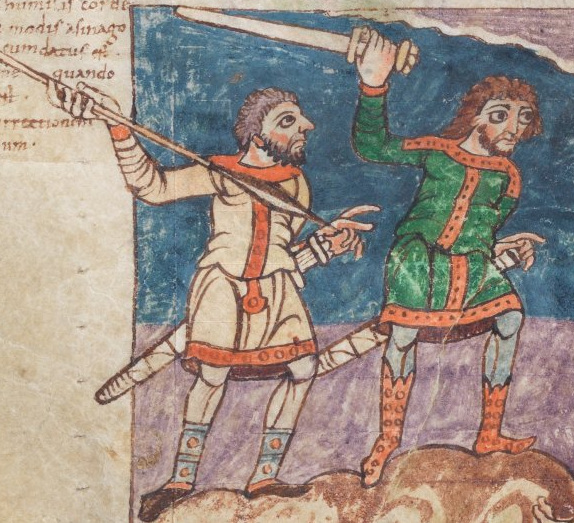One day, Arni Bjorn Valdimarsson set out to hunt geese in the Skaftarhreppur region of Southern Iceland, along with four of his friends. As far as hunting was concerned, the trip was a dismal failure as they failed to shoot any birds, but it was very successful from an archaeological point of view. The five friends stumbled upon an extremely well-preserved Viking sword lying partially covered on the ground. As Runar Stanley Sighvatsson told The Iceland Monitor in an interview, “It was just lying there, waiting to be picked up. It was obvious and just lying there on the ground.”
Valdimarsson posted photographs of the sword on his Facebook page because he and his friends were hoping to collect a large reward, but all that he attracted was the attention of the Icelandic Cultural Heritage Agency, which contacted him to inform him that all archaeological artifacts found in Iceland automatically belong to the state. They made arrangements to meet Valdimarsson to collect the sword.
Ancient Viking sword discovered in pagan boat grave near #Akureyri in #Iceland – look out for a new shore excursion!https://t.co/8JnxO0enSM pic.twitter.com/y9U4ph7Abm
— Shorexpert (@shorexpert) June 15, 2017
The director of the Cultural Heritage Agency, Kristin Huld Sigurdardottir, said that the sword was an important and rare find, as it was one of only 20 Viking swords discovered in Iceland. For this reason, the exact location of the find has been kept secret so that archaeologists have a chance to scientifically survey the area before any horde of tourists and amateur researchers descend on it. The sword was dated to the 10th century and is thought to have been placed in a pagan grave. There had been bad flooding in the area of the discovery, and that may have disturbed a previously unknown grave site.
The Archaeology News Network: Tenth century Viking sword discovered in Iceland https://t.co/HRFH1iYbT8 pic.twitter.com/e4BActwBhr
— ArchaeoNewsNet (@ArchaeoNewsNet) September 12, 2016
The sword was X-rayed and the plates show that the sword is a type-Q, decorated with a pattern that runs from the guard to the point, and is some 950 to 1,000 years old.
The hunters speculated that the sword might have belonged to Ingolfr Arnarson. The name Ingolfr Arnarson is very well known in Iceland, as he is credited with being the first Viking settler in Icelandic territory. He arrived with his wife Hallveig Frodesdatter, his brother Chiorleif, and his step-brother Hjörleifr Hróðmarsson. The Icelandic Book of Settlements claims that Arnarson settled in Reykjavik in 874.
A 1000 year old viking sword has been discovered in Iceland… just lying around! https://t.co/AKWhX2Cn4A pic.twitter.com/eV7874VSEw
— Myko Clelland (@DapperHistorian) September 7, 2016
According to legend, Arnarson left Norway due to a blood feud and set off to find a new island that he had heard had been discovered in the ocean. When he sighted land, he took his high seat pillars and threw them into the sea, proclaiming that he would build his settlement wherever the gods saw fit to bring the pillars to land. High seat pillars were a pair of decorative wooden poles that flanked the chair of the head of a Scandinavian household and were a sign of a chieftain or king. Two of Arnarson’s slaves searched for three years before they found the pillars, and Arnarson then founded his settlement at Reykjavik. Little is known about his life after this, but his son Torstein became an important chieftain and is credited with founding the first Thing, or parliament, in Iceland–a forerunner of the modern Althingi.
Related story from us:Surviving examples of elaborate Viking swords
This valuable sword is one of the top finds in Iceland. It will be carefully preserved and studied to confirm who it belonged to and where it fits into the story of the Icelandic nation.
